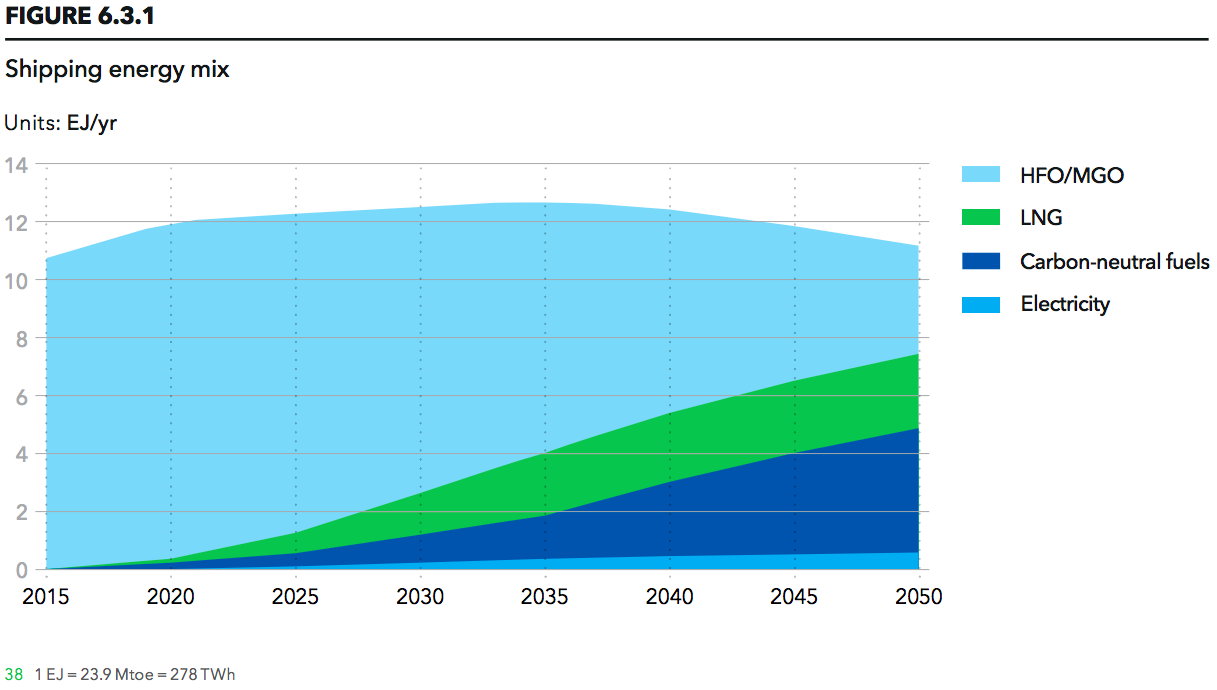Maritime Industry Targets Ammonia Fuel to Decarbonize Shipping
By Trevor Brown on October 25, 2018
In the last 12 months …
The International Maritime Organization issued its Initial GHG Strategy, committing the global shipping industry to emission reductions that cannot be achieved with carbon-based fuels. This single action is the regulatory trigger that unleashes a three-decade transition to carbon-free liquid fuels like ammonia. The target date for this 50% reduction in emissions is 2050 but, given the long economic life of ocean vessels, the transition must begin immediately.
Maritime classification societies, including Lloyd’s Register and DNV GL, have published in-depth analyses of ammonia’s potential role in this transition, alongside other carbon-neutral fuels. Lloyd’s Register declared that ammonia “appears the most competitive” of all sustainable liquid fuels. DNV GL predicted that carbon-neutral liquid fuels would overtake oil-based fuels in the global shipping market by 2050, 39% to 33%. For ammonia to meet this demand, an additional 200 million tons per year must be produced, without fossil feed stocks.
The International Transport Forum, the OECD’s “think tank for transport policy,” announced that “currently known technologies could make it possible to almost completely decarbonise maritime shipping by 2035,” based on achieving a 70% mix of ship using ammonia or hydrogen fuel.
In the coming year, we can expect much more in-depth analysis of the potential for ammonia fuel from experts across the shipping sector. This will require moving from theoretical desktop studies to experimental real-world demonstration projects. The first of these pilot projects will be the Dutch consortium, with partnership from Yara, which is developing “an ammonia tanker fueled by its own cargo.”
Ammonia Energy reporting on this topic since last year
- September 2018: DNV GL predicts carbon-neutral fuels, including ammonia, to surpass oil for shipping by 2050
- July 2018: Ammonia as a Renewable Fuel for the Maritime Industry
- July 2018: International Chamber of Shipping endorses “Reducing CO2 Emissions to Zero,” with ammonia as a maritime fuel
- April 2018: P2X, Ammonia Highlighted for Long-Haul Road Transport, Shipping
- April 2018: What drives new investments in low-carbon ammonia production? One million tons per day demand
- April 2018: Decarbonising Maritime Transport: OECD report sees ammonia fuel enabling carbon-free shipping by 2035
- February 2018: Pilot project: an ammonia tanker fueled by its own cargo
- December 2017: Bunker Ammonia: new report quantifies ammonia as “the most competitive” fuel for zero-emission maritime vessels in 2030
A year in review
To mark the second anniversary of Ammonia Energy, we are reviewing the most important stories from the last 12 months. This “top ten” list spans two areas: five are significant advances that build on activities that were already underway in 2017, and five are new developments that emerged decisively this year.
Significant advances:
- Ammonia as a Grid-Supporting Energy Storage Solution
- Ammonia as a Hydrogen Carrier for Hydrogen Fuel Cells
- Maritime Industry Targets Ammonia Fuel to Decarbonize Shipping
- Ammonia for Fuel Cells: AFC, SOFC, and PEM
- Great Strides in NH3 Commitment and Progress in Australia
New developments:
- Green Ammonia Plants, Commercially Available Today
- Ammonia Is Taken Up by Wide-Circulation Media
- Targets, Limits, Pledges, Bans: Enforcing the Transition to Sustainable Energy
- Affiliated NH3 Groups Become a Force for Advocacy
- Fossil Energy Companies Turn to Ammonia
